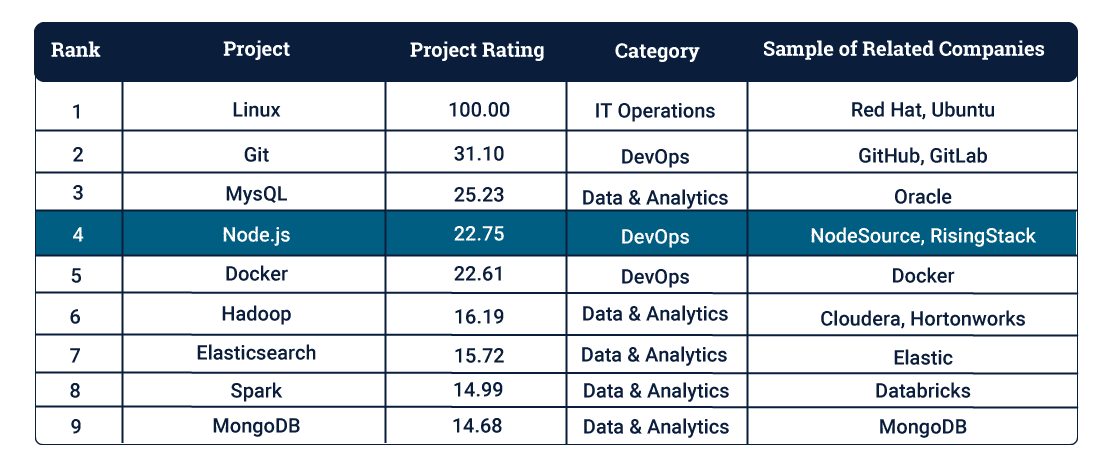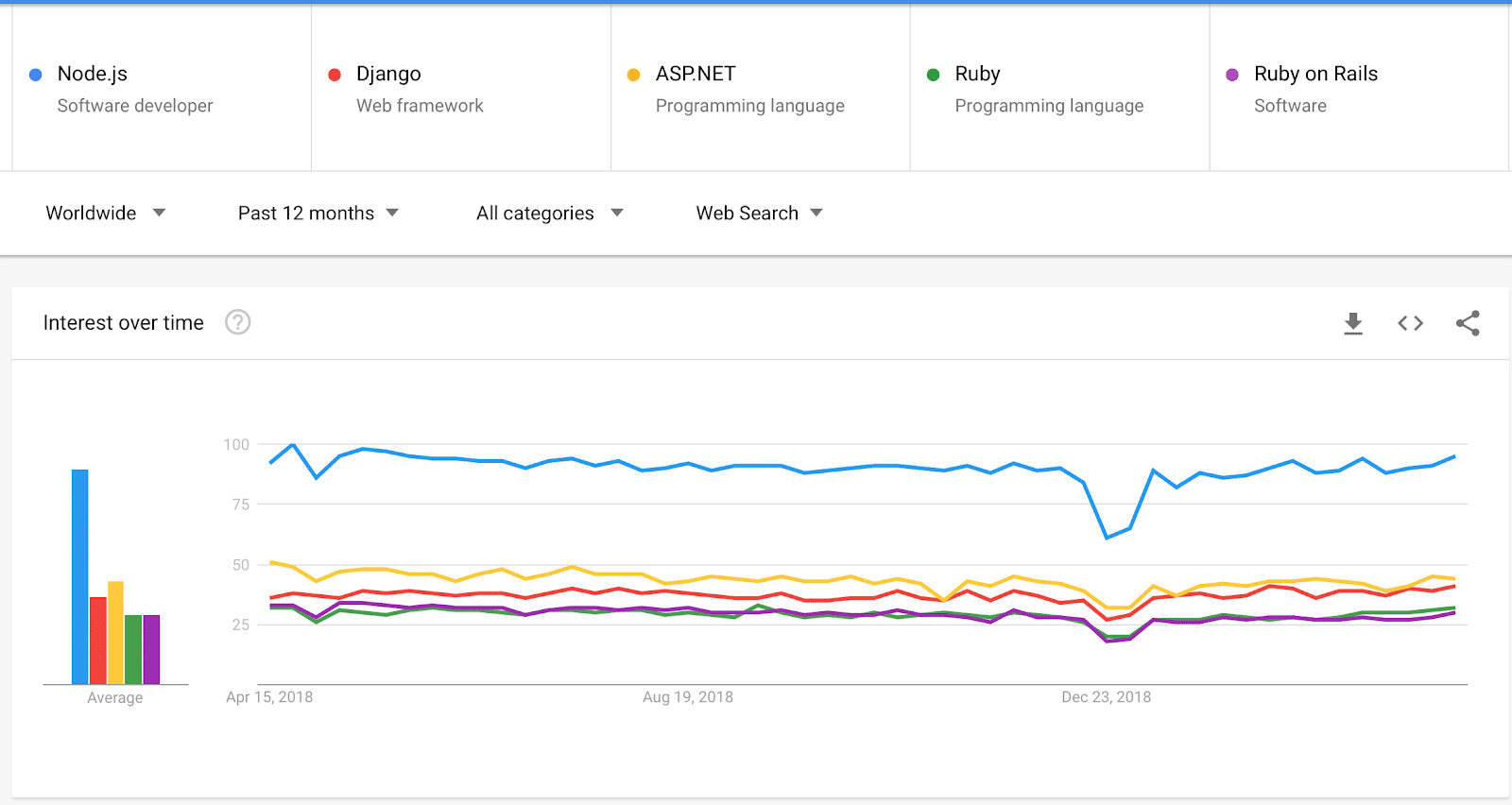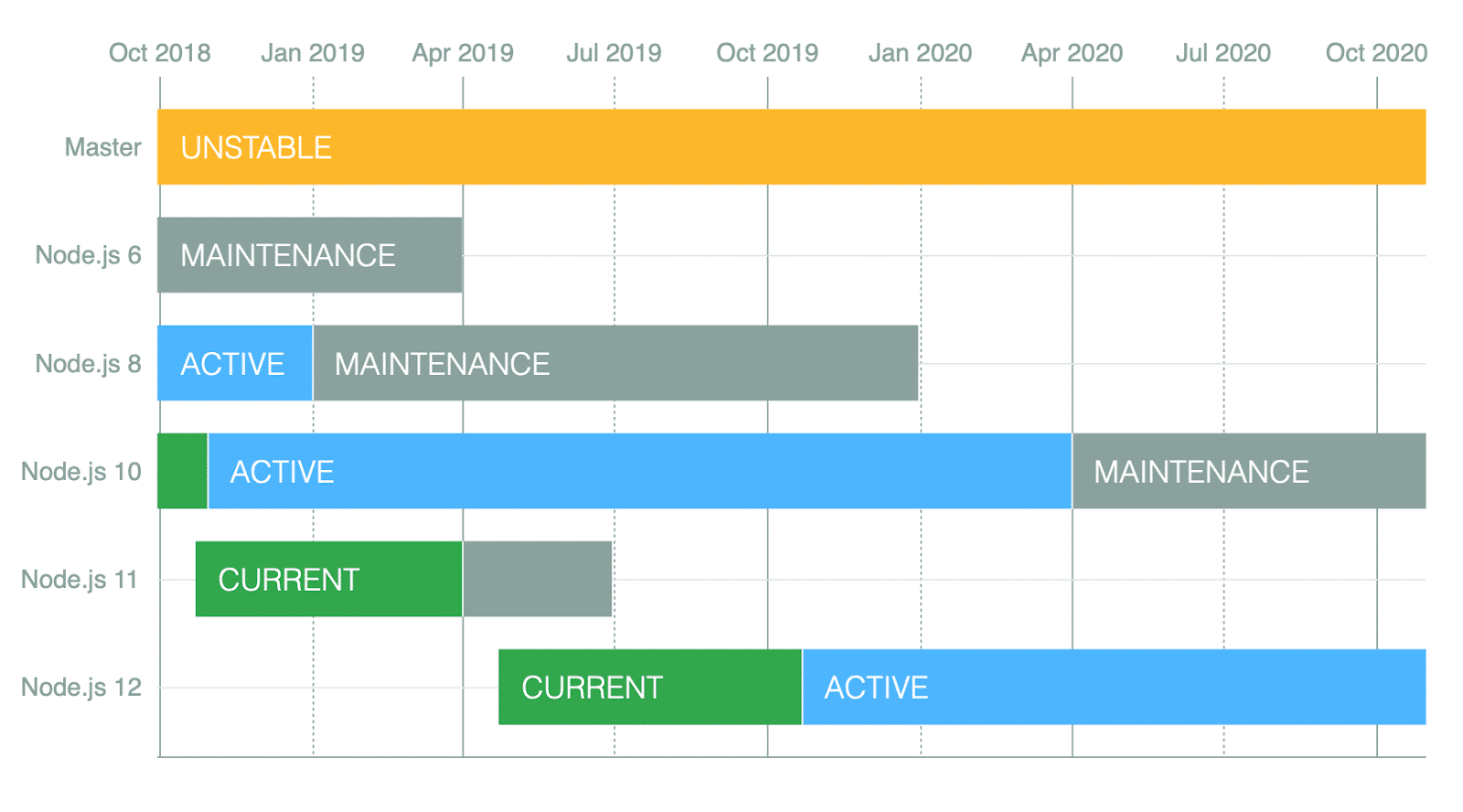Why is Node.Js becoming popular with Enterprises?
Node.js is a JavaScript runtime environment for building robust web applications. It is an efficient and lightweight platform which comes out-of-the-box with the bare essentials or modules like npm, install, uninstall, update which are necessary for developing scalable apps. Node.js can be extended using third-party modules for creating feature-rich enterprise web applications due to the vast ecosystem that is built around it.
How a browser processes JS code?
A browser has an in-built JS engine within its runtime environment to process JS code.

How Node.js processes JS code
Node.js Development incorporates Chrome’s V8 engine and embeds it inside a C++ program. It also has certain objects that provide an environment for our JS code. This is different than using DOM. These capabilities of Node open a door of possibilities for developers and enterprise applications which are not possible on a Web Browser.
Few examples not possible on a browser:

Commands like fs.readFile() let you work with a file system.
You can listen for requests on a given port using http.createServer().
Node.js is most often used to build backend services like APIs for powering web and mobile apps. Node.js allows you to build services that these web and mobile apps can interact with, such as store data, send emails and push notifications, trigger workflows and so on. It is ideal for building highly scalable, data-intensive and real-time backend services that power client applications.
Node.js – Architecture and How it Works
Node.js is asynchronous and non–blocking in nature for all I/O. It is based on an event–driven architecture. These two features are critical to Node’s performance, throughput and scalability for building large scale enterprise web applications which have a huge volume of transaction input/output operations. Not just enterprise solutions, but even games and web apps which involve real-time communication are effortless using Node.
Let’s understand what asynchronous and non-blocking nature of Node.js means with the help of a metaphor.
In a restaurant, there are multiple tables. Once you place an order with the waiter, the chef in the kitchen starts preparing your order. Meanwhile, the waiter can proceed to take other orders from people in the restaurant while the chef prepares your meal. They don’t have to wait for the chef to cook one meal before they serve other tables.

In contrast to this, the synchronous and blocking nature, the same restaurant example would work a bit differently. While the waiter took the order from Table 1, he would wait in the kitchen while the chef prepared your order. He would not take any orders from the other tables in the restaurant.
In this case, to serve multiple requests, you need 1 thread for each request. Eventually, with a large number of requests coming in, you might run out of threads, and those requests will have to wait, while the other threads are just waiting without performing any task. More threads mean more hardware. This is not an efficient use of resources.

How does the Single Thread work with multiple requests in Node?
Say, Request 1 needs to query a database to get a result (any data). In this case, the thread will not wait while the database is being queried. It is free to serve Request 2….n.

This way the thread is capable of handling and serving multiple requests.
libuv is a multi-platform support library which is responsible for the phenomenal asynchronous I/O performance of Node.js.
Asynchronous and non-blocking nature of Node makes it ideal for I/O intensive apps. Node is hence ideal for apps which need a high amount of database, network or disk access.
How Popular is Node.js?
According to the Node.js Foundation, Node surpassed a billion downloads and is now part of the three comma club. The core of Node.js is all about developing real-time applications.

Source: https://nodejs.org/metrics/[/caption]It is one of the top most-in-demand developer skills of 2019.
According to The Battery Open-Source Software Index (BOSS Index), Node is the 4th most important open-source Project.


According to Google trends, it’s the most trending topics amongst the popular development frameworks such as Django, Ruby (language), ASP.NET or Ruby on Rails (Software).
Benefits of Node.js in building Enterprise Web Apps
There are a few major advantages of Node.js that make it so popular and widely used. Node.js is very efficient when it comes to web and enterprise applications that have a lot of input-output operations that query the database.
- Microservices-based Architecture
Every enterprise app starts small (MVP) and goes on to become a full-blown project which may define the business entirely. Enterprises are looking to get more Agile and have an iterative cycle for development. They’ve started developing applications with a Microservice architecture, where you build single-function modules that can function independently having a well-designed user-interface. This encourages the DevOps and Agile mentality within organizations.
With Microservice-based apps, Software is developed, tested and deployed faster and with higher reliability. Rather than having one big application with a complex codebase, organizations like Amazon, PayPal, GoDaddy and Netflix have opted for a Microservice-based architecture instead of a monolithic architecture. These companies build small units (microservices) that come together to form a large application. It allows developers to write code in different languages, for different parts of the app and from different parts of the world at the same time.
The single functioning modules can be decoupled and can troubleshoot easily.
Imagine there’s a modification to a small section of the codebase due to which the entire application needs to be deployed again. In case of a microservice-based application, the entire app does not have to be deployed again.
Node.js allows you to create highly scalable microservice-based web apps.
- Regular Maintenance and Updating of Codebase
There’s a change in the users are consuming web and enterprise applications. Their needs are changing, and businesses need to evolve to adapt to their demands. UI/UX has become a significant part of an enterprise application. The way you represent action elements on an app, the way you collect data, the way you present data has had a significant shift. Less is more now, with the underlying factor that functionality is not compromised.
With Node.js this is quickly taken care of, and you can keep your clients happy by readily deploying their desired feature requests.
- Increased Performance and Productivity
Due to Node.js’s asynchronous behaviour, it can handle a substantial volume requests simultaneously with minimal resources (hardware) at hand. This has a considerable impact on the response time of your web application. It also saves much cost on investing in expensive servers.
Node.js is based on JS. This makes it easier to maintain the frontend and backend of the application.
- All-in-one Package Manager for all Project Dependencies
Node Package Manager (npm) is like the ace-in-the-hole for all Node.js developers. It consists of over 190,00 modules. It has been a key driving factor in the success of Node.js. Node.js has a massive number of third-party modules and libraries which are available through npm. This increases the usability of Node and reduces dependency. With npm, developers can use already available software modules and not write common features and functionalities from scratch.

npm Enterprise lets businesses run the npm infrastructure behind their firewall. This gives businesses more control over the code to identify potential risks and vulnerabilities. They can fix these issues.
- No Learning Curve
As Node.js is based on JavaScript, it does not have much of a learning curve. The syntax is similar and hence easy to grasp. It is accepted by Java as well as .NET developers worldwide. Programmers can learn, develop and deploy scalable apps using Node.js on Unix and Windows.
It also allows beginner-level developers to learn and implement Node.js for building web apps quickly.
- Single-threaded, Event-driven, Asynchronous and Nonblocking I/O
With Node.js’ event-driven architecture, it offers a high level of concurrency. Node.js makes use of the event loop and callbacks. Callbacks are in place, and the thread does not have to wait till the request is served. Whenever the data is ready in the event loop, the thread processes and delivers it. This way your application can simultaneously handle a huge number of requests.
- LTS (Long Term Support)
When everything around us is changing so fast, somethings need to stick. Node.js is only 10 years old but provides Long Term Support. This provides organizations and developers with the reliability which is required if you’re basing your entire business on a particular technology.
Any major Node.js release will be maintained for 18 months (as promised by Node.js) from the time it is made as an LTS version. Post this, it will enter a 12-month period of maintenance. Here, no new additions will be made to its modules (features) and existing bugs and security issues will be identified and fixed.
- JSON formats
Node.js works primarily with JSON formats. This format has become widely used among developers as an alternative to Java objects. Node.js returns data in JSON, which forms the crux of JavaScript. Hence no additional parser is needed to process the data. Node.js can quickly process this data, without any latency.
Encourages Cross-platform Collaboration
- Community
Node.js has a huge community built around it. The community consists of active developers who are continually adding value to the existing resources that Node has.
The Node.js foundation is a big step in the right direction. The foundation was formed in 2015, backed by the Linux Foundation and major players such as Fidelity, Microsoft, PayPal and so on. The foundation encourages developers to showcase their work.
In their words,
The Node.js Foundation’s mission is to enable widespread adoption and help accelerate the development of Node.js and other related modules.
- Cross function development teams
As Node.js is based on JS, you don’t need to hire separate developers for backend and frontend. Quality developers working on Node, can work on Angular and React as well. Node.js pushes developers to become more efficient in both aspects of development, allowing enterprises to build a team which is more equipped to handle challenges. Full-stack developers are the future! As opposed to a skill-driven team of coders, testers, DevOps, and more, Node.js encourages developers to know it all. This reduces dependency and increases the productivity of the organization.
- Scalability
Node.js allows your application to scale vertically as well as horizontally. This means you can add additional nodes to the existing system. Also, you can add additional resources to your existing single nodes for the vertical uplifting of your app.
Major Companies built on Node.js
Some major companies have relied on Node.js as their primary technology for building apps and services. Some of these are:
- Amazon
- PayPal
- Medium
- eBay
- NASA
- Groupon
- Walmart
- Netflix
- Trello
- Uber
Node.js Success Stories
PayPal
PayPal compared its existing Java and Spring based application versus its newly developed Node App. It experienced that:
- The Node App was built in half the time as the original app and with fewer people involved in the development lifecycle.
- It had 33% fewer lines of code
- It had 40% fewer files
- It was able to double (2x) the number of requests served per second
- It was able to decrease the average response time by 35%
Dow Jones
Dow Jones was already using JS in 2010. In 2011, they experimented with Node.js for building a Facebook-like application, named “Wall Street Journal Social”. The success was overwhelming. The Performance was phenomenal with just a few weeks of development time.
Soon after that, their CTO announced Node.js as their primary technology at Dow Jones.
NASA
NASA uses Node.js for a vital purpose – saving the lives of their astronauts in space!
Unfortunately, NASA came very close to losing one of their astronauts during a space expedition due to unreliable data being gathered from multiple locations.
NASA moved all of its data (for EVA Spacesuits) to a single cloud, reducing the access time.
Conclusion
Node.js has established itself as a major platform for backend services. It has become the Connor McGregor of web and enterprise-level app building technologies and rightly so.
The architecture for Node.js suits perfectly for many enterprise level applications which require high volumes of I/O operations with the Network, Disc or memory. Enterprise Apps such as Chat apps, Live Sports feed apps and more.
Node.js has a ton of benefits with faster time-to-market, lesser lines of code with higher performance. Serve MORE clients in LESS time with the same or lesser resources than a Java-based application.
With the LTS and community support built around it, Node.js is only going to grow from here.

